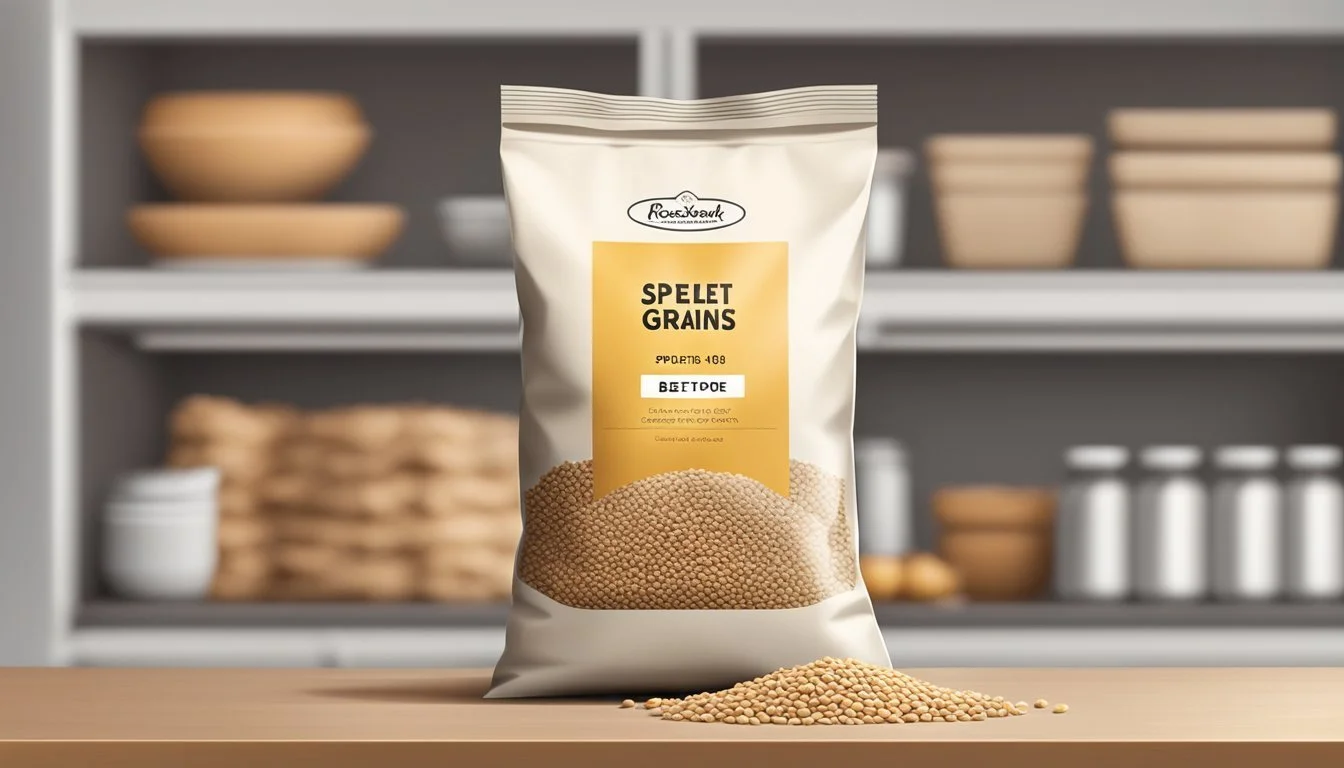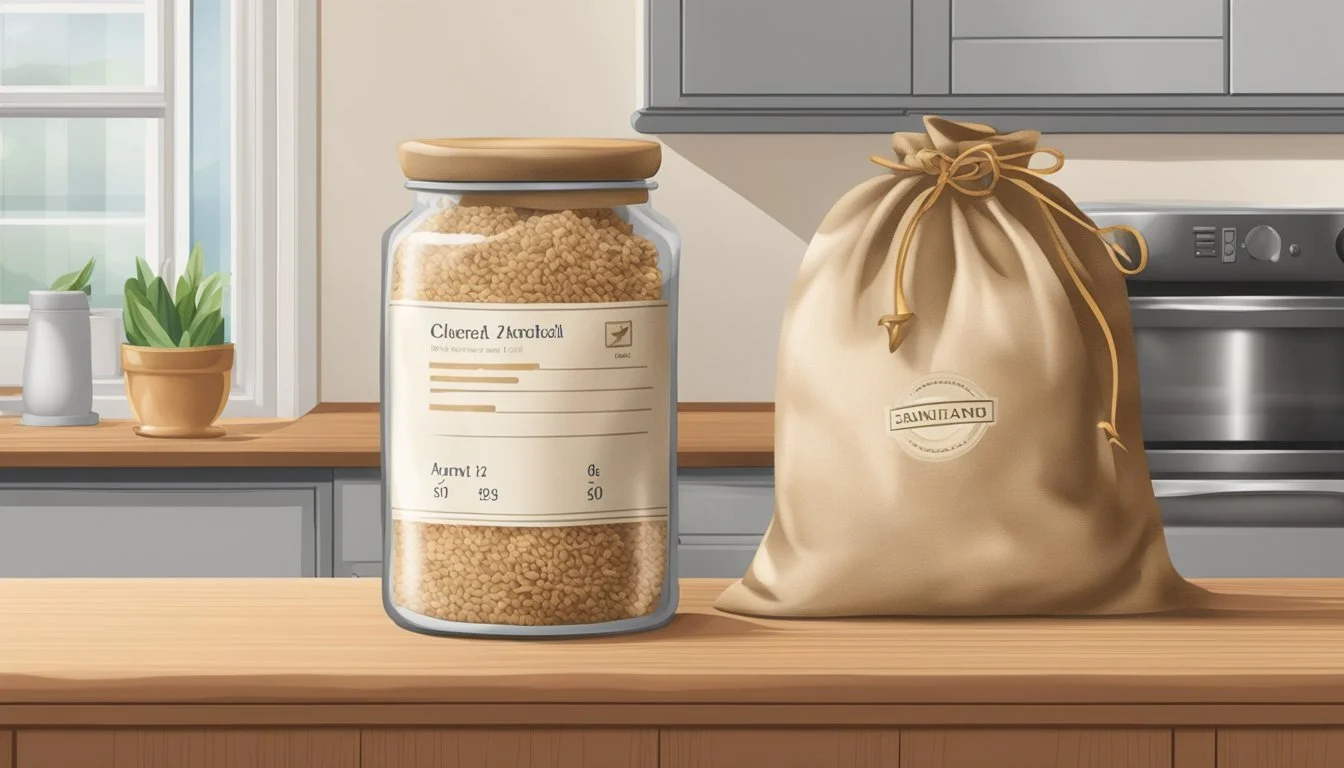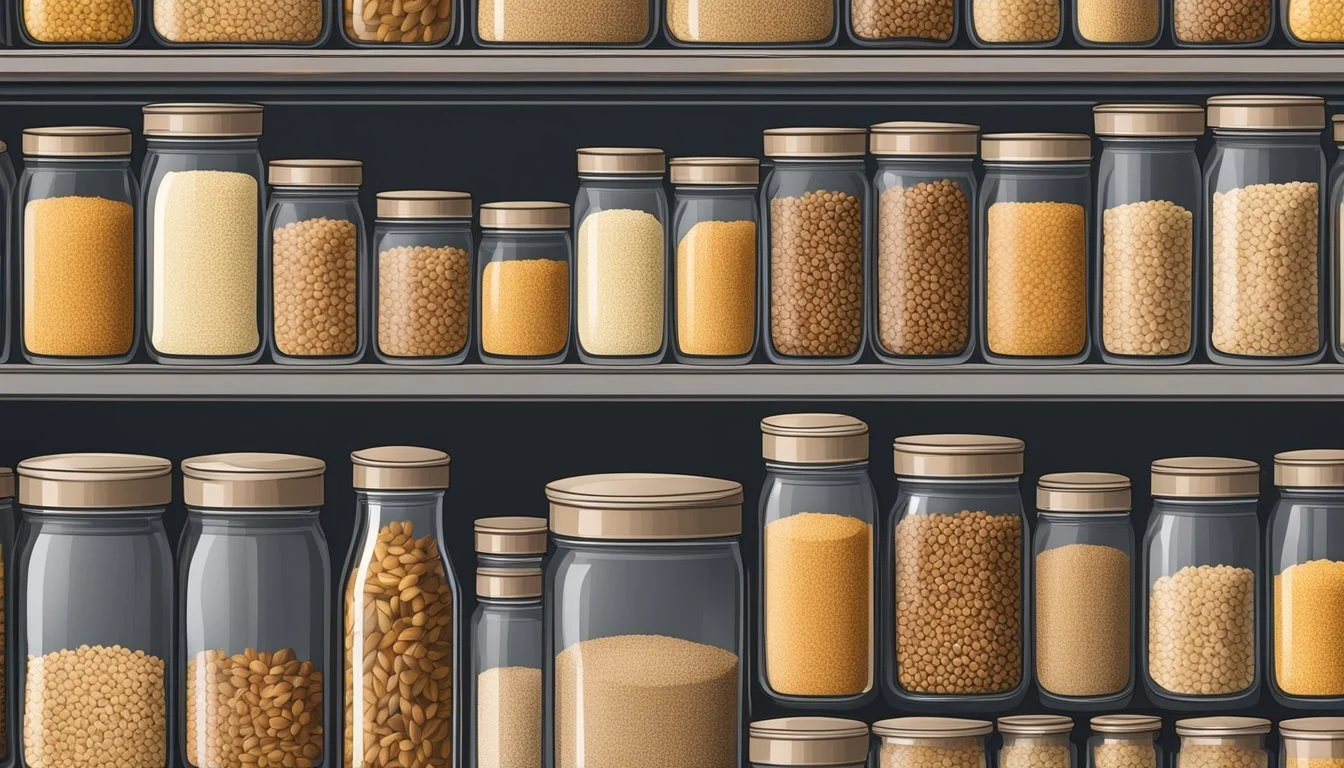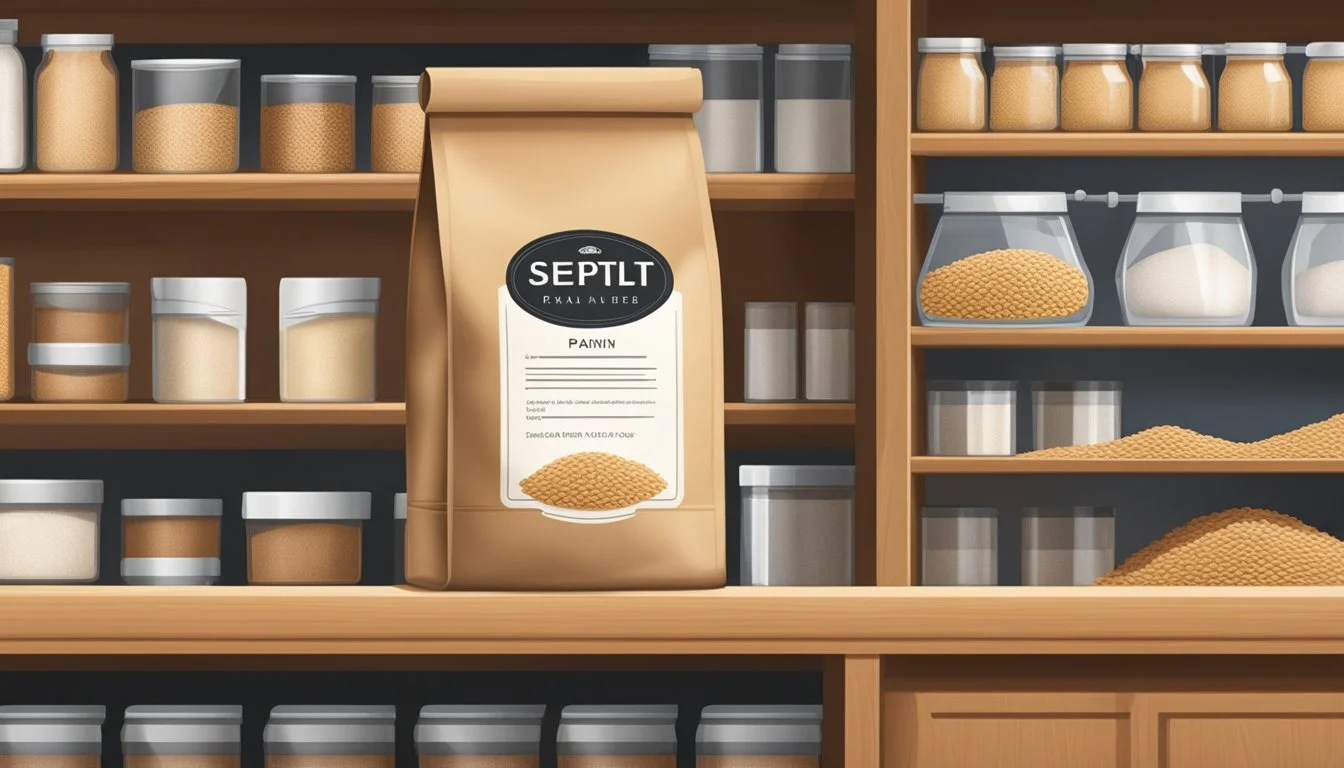Does Spelt Go Bad?
Shelf Life, Storage, and Signs of Spoilage
Spelt, a form of whole grain wheat, is gaining popularity for its nutty flavor and nutritional benefits. However, many are unaware that, like other types of flour, spelt flour can indeed go bad over time. The oils in whole grain spelt flour are susceptible to oxidation, leading to rancidity. This natural process affects the longevity and quality of the flour, making proper storage crucial.
The degradation process of spelt flour involves changes in odor, texture, and appearance. Fresh spelt flour typically has a fine, powdery texture and a mildly nutty aroma. If the flour smells rancid or musty, or if you find clumps and color changes, it is likely spoiled.
Proper storage can extend the shelf life of spelt flour significantly. Keeping it in a cool, dry place away from heat and humidity is critical. In some cases, refrigeration or freezing can help preserve its quality for up to two years. By following these guidelines, one can enjoy the benefits of spelt without the concern of it going bad prematurely.
Understanding Spelt
Spelt, an ancient grain, has gained popularity for its nutritional benefits and versatility. Below, we explore its origin, nutritional profile, and available forms of spelt flour to better understand this remarkable grain.
What is Spelt?
Spelt (Triticum spelta) is a type of wheat that has been cultivated for thousands of years. Recognized for its distinct nutty flavor, it is often considered more nutritious than modern wheat. Unlike traditional wheat, spelt has a tougher husk, which helps protect the grain and preserve its nutrients. Spelt is commonly used in making bread, pasta, and other baked goods.
This ancient grain is often referred to as the parent of modern wheat varieties. It contains the bran, germ, and endosperm, making it a whole grain. Despite its resemblance to wheat, it is easier to digest for some people due to its unique protein structure.
Nutritional Profile of Spelt
Spelt offers a rich array of nutrients, making it a valuable addition to a balanced diet. It contains higher protein levels compared to wheat, with about 5-6 grams of protein per serving. This grain is also rich in dietary fiber, improving digestion and maintaining steady blood sugar levels.
Spelt is an excellent source of essential minerals, including iron, magnesium, and zinc. It also provides B vitamins, which are crucial for energy metabolism and overall cellular function. Despite containing gluten, it is often better tolerated by individuals with slight gluten sensitivities due to its different gluten structure.
Different Forms of Spelt Flour
Spelt flour comes in various forms, each suitable for different culinary uses. Whole spelt flour includes the entire grain — bran, germ, and endosperm — offering maximum nutritional benefits. This form has a shelf life of about 3-6 months. Refined spelt flour has the bran and germ removed, resulting in a lighter texture and longer shelf life of up to 12 months.
White spelt flour is another type, made by finely milling the inner part of the grain. This flour is ideal for delicate baked goods but does not offer the same level of fiber and nutrients as whole spelt flour. Proper storage in a cool, dry place can help maintain the quality and extend the shelf life of these flours.
How to Store Spelt
Proper storage significantly extends the shelf life of spelt. By maintaining ideal conditions, you can prevent spoilage and ensure that the grain retains its quality and nutritional benefits.
Ideal Storage Conditions
Spelt should be stored in a cool, dry place to maintain its freshness. An airtight container is essential to protect from moisture and pests. Glass jars, plastic containers with tight-sealing lids, or resealable plastic bags are excellent options.
Keeping spelt in a dark place, such as a pantry or cupboard, also helps prevent exposure to light, which can degrade its quality. Avoid placing it near heat sources, such as ovens or stoves, as excessive warmth can accelerate spoilage.
Storing Spelt at Room Temperature
When storing spelt at room temperature, place it in an airtight container to prevent air and moisture infiltration. A pantry or a kitchen cupboard works well, provided it's away from heat and direct sunlight. Maintaining a consistent, cool temperature is crucial for longevity.
Room-temperature storage typically keeps spelt fresh for several months. Label the container with the date of purchase or storage to keep track of its age. Check periodically for any signs of spoilage, such as an unpleasant odor or visible mold.
Refrigerating and Freezing Spelt
For extended shelf life, refrigerating or freezing spelt is highly effective. Store spelt in airtight containers or freezer bags to avoid condensation inside the package, which can lead to mold growth. In the refrigerator, spelt can last up to six months, significantly longer than at room temperature.
Freezing spelt provides the longest storage duration, up to a year. Before usage, allow the spelt to reach room temperature to prevent any condensation from forming when opening the package. Always examine the spelt for any changes in color or texture before using, regardless of the storage method.
Shelf Life of Spelt
Spelt flour, like many other types of flour, has a limited shelf life. Its longevity can depend on several factors, including storage conditions and the type of spelt flour.
Shelf Life Expectancy
The shelf life of spelt flour varies based on whether it is whole-wheat or refined.
Whole-wheat spelt flour, which includes the entire grain, generally lasts from 3 to 6 months.
Refined spelt flour has a longer shelf life, ranging from 6 to 12 months due to the removal of the germ and bran.
Consumers should always check the expiration date or best-by date printed on the packaging and use fresh flour before it becomes rancid.
Factors Affecting Shelf Life
Several factors can influence the quality and freshness of spelt flour over time:
Milling Type: Whole-wheat spelt flour contains more natural oils, making it more prone to spoilage compared to refined spelt flour.
Storage Conditions: Spelt flour should be stored in a cool, dry, and dark place to minimize exposure to heat, light, and humidity.
Temperature: Keeping spelt flour below 70°F can significantly extend its shelf life. For extra longevity, refrigeration is recommended.
Seal and Moisture Control: Ensure the flour is kept in an airtight container to limit oxidation and prevent moisture ingress, which can lead to mold growth.
By being mindful of these factors, one can maintain the freshness and quality of spelt flour for better baking and cooking results.
Health and Safety Considerations
When dealing with spelt flour, it is crucial to understand the potential health risks of consuming expired spelt and the measures to prevent contamination and pest infestation.
Consuming Expired Spelt
Expired spelt flour can pose health risks due to the natural oils it contains, which may oxidize and become rancid. The flour might develop an off-putting smell, taste, and texture.
Bacterial growth is also a concern. Consuming rancid spelt can lead to digestive issues like diarrhea or upset stomach.
Harmful compounds, such as mycotoxins, can form if the flour has been exposed to moisture and mold. Always inspect spelt flour for changes in color, texture, or odor before use, and discard any that appears spoiled.
Preventing Contamination and Pests
To ensure food safety, it’s important to store spelt flour properly. Keep it in an airtight container to minimize exposure to oxygen and moisture.
Storage conditions are critical—store spelt flour in a cool, dry place, preferably below 70°F. This helps prevent the growth of bacteria and mold, as well as deterring pests.
Pests like insects can contaminate flour. Regularly check for any signs of infestation, and use food-grade pest deterrents if necessary. By implementing these steps, you can maintain the quality and safety of your spelt flour for an extended period.
Effects of Spelt Spoilage on Baking
Spoiled spelt flour can negatively affect baking by altering flavor, texture, and leavening. These changes can lead to poorer baking results and unpleasant experiences.
Impact on Flavor and Texture
When spelt flour spoils, it develops an unpleasant odor and taste. Fresh spelt flour has a mildly nutty flavor, while rancid flour smells and tastes sour or musty. This spoilage will transfer to your baked goods, making them taste off.
Texture is also affected. Spoiled spelt flour often clumps due to moisture absorption, which fosters mold growth. Mold can appear in colors like black, green, or white. Using such flour results in an inconsistent texture in baked goods, making them gritty or uneven.
Impact on Leavening and Results
The leavening process is crucial to baking. Spoiled spelt flour can disrupt this process. Moisture in spoiled flour can affect the activity of leavening agents like baking powder or yeast. This leads to poor rise and structure in your baked goods, yielding dense or flat results.
Stale flour loses its freshness, impacting the dough’s elasticity and rise. Using spoiled flour can cause bread and other baked items to fail, appearing less appetizing and achieving subpar baking results.
Tips for Maintaining Quality
Maintaining the quality of spelt flour involves proper storage techniques and using it within recommended timeframes to preserve its flavor and health benefits effectively. Ensuring airtight sealing and monitoring the best-by date can significantly reduce spoilage risks.
Proper Opening and Sealing
When opening a package of spelt flour, it is crucial to reseal it tightly. Transferring the flour to airtight containers or using freezer bags can help prevent moisture and odor absorption, which are primary factors leading to spoilage.
Ensure that the container is labeled with the date of storage. Keeping spelt flour in a cool, dry place with temperatures below 70°F can also help maintain its quality and extend its shelf life. Regularly inspect the flour for any signs of lumps or odor changes that might indicate spoilage.
Using Spelt Before Expiration
Whole-wheat spelt flour tends to have a shorter shelf life compared to its refined counterparts. Whole-wheat typically lasts about 3-6 months, while refined spelt flour can last 6-12 months if stored properly.
It is advisable to regularly check the best-by date on the package and use the flour before this date to ensure optimal quality. If storing flour in the refrigerator, extend its shelf life to up to 6 months, and up to 12 months in the freezer. This prevents the flour from going rancid, thus preserving its flavor and nutritional benefits.
Comparing Spelt with Other Flours
Spelt flour differs significantly from other types of flour in terms of nutritional content and shelf life. This comparison highlights the unique qualities and storage considerations of spelt versus all-purpose, coconut, and other flours.
Nutritional Differences
Spelt Flour
Spelt flour is rich in fiber, containing both soluble and insoluble types which aid digestion and regulate blood sugar. It is higher in protein than common wheat flour, supporting muscle growth and repair. Additionally, spelt is abundant in vitamins and minerals, providing essential nutrients for various bodily functions.
All-Purpose Flour
All-purpose flour tends to be less nutritious due to heavy processing and refining. This process strips away many nutrients found in whole grains. While it does contain some fiber and protein, it's comparatively lower than spelt. However, it is more versatile for different recipes due to its neutral taste and texture.
Coconut Flour
Coconut flour is another alternative, notable for its high fiber content, even surpassing spelt. It is also gluten-free, making it suitable for those with gluten sensitivities. However, it has a distinct coconut flavor which may not be suitable for all dishes. Coconut flour is also higher in fats compared to both spelt and all-purpose flour.
Cake Flour
Cake flour is very low in protein, making it ideal for light and airy baked goods. It lacks the fiber and nutrient density of spelt and is heavily refined. It does not offer significant health benefits but excels in creating tender textures in cakes and pastries.
Shelf Life Variations
Spelt Flour
Spelt flour has a shorter shelf life due to its high fat content and minimal processing. Stored correctly in a cool, dry place or the refrigerator, it can last up to 4 to 6 months. Its whole grain nature makes it prone to rancidity if not stored properly.
All-Purpose Flour
All-purpose flour has a longer shelf life, generally lasting 6 to 8 months when stored in a cool, dry place. This is due to its refined nature and lower fat content. Proper storage is still required to prevent contamination and spoilage.
Coconut Flour
Coconut flour, given its high fat content, also requires careful storage. When kept in an airtight container in a cool place, it can last up to 12 months. However, like spelt, it can spoil quickly if exposed to moisture or not stored correctly.
Cake Flour
Cake flour's shelf life is similar to all-purpose flour, lasting 6 to 8 months. Due to its refined nature and low fat content, it is less prone to rancidity but still benefits from being kept in a dry, cool environment.
Alternatives to Spelt
When spelt is unavailable or unsuitable, several alternatives can be used in its place, ranging from nutrient-dense grains to gluten-free options. This allows for flexibility in recipes while catering to dietary needs and preferences.
Substituting with Nutrient-Dense Grains
Whole Wheat Flour is closely related to spelt in terms of nutritional value and texture. It is a whole grain that can replace spelt on a 1:1 basis in most recipes.
Kamut Wheat Flour, also known as Khorasan wheat, is an ancient grain with a unique flavor and excellent nutritional profile, making it a suitable substitute. It contains gluten like spelt and provides a rich, nutty taste.
Einkorn Flour is another ancient grain alternative. It has a slightly sweet flavor and is easier to digest due to its simpler gluten structure, though it still contains some gluten.
Gluten-Free Alternatives
For those with gluten sensitivities or celiac disease, several options are available. Almond Flour, made from ground almonds, is gluten-free and packed with protein and healthy fats. It offers a mildly nutty flavor and works well in a variety of baked goods.
Coconut Flour is another grain-free and gluten-free option. High in fiber and healthy fats, it absorbs more liquid than spelt, so recipe alterations may be required.
Lastly, Rice Flour and Amaranth Flour are excellent substitutes. Both are gluten-free, with amaranth offering a higher protein content and richer nutritional profile, while rice flour provides a neutral flavor suitable for many recipes.










